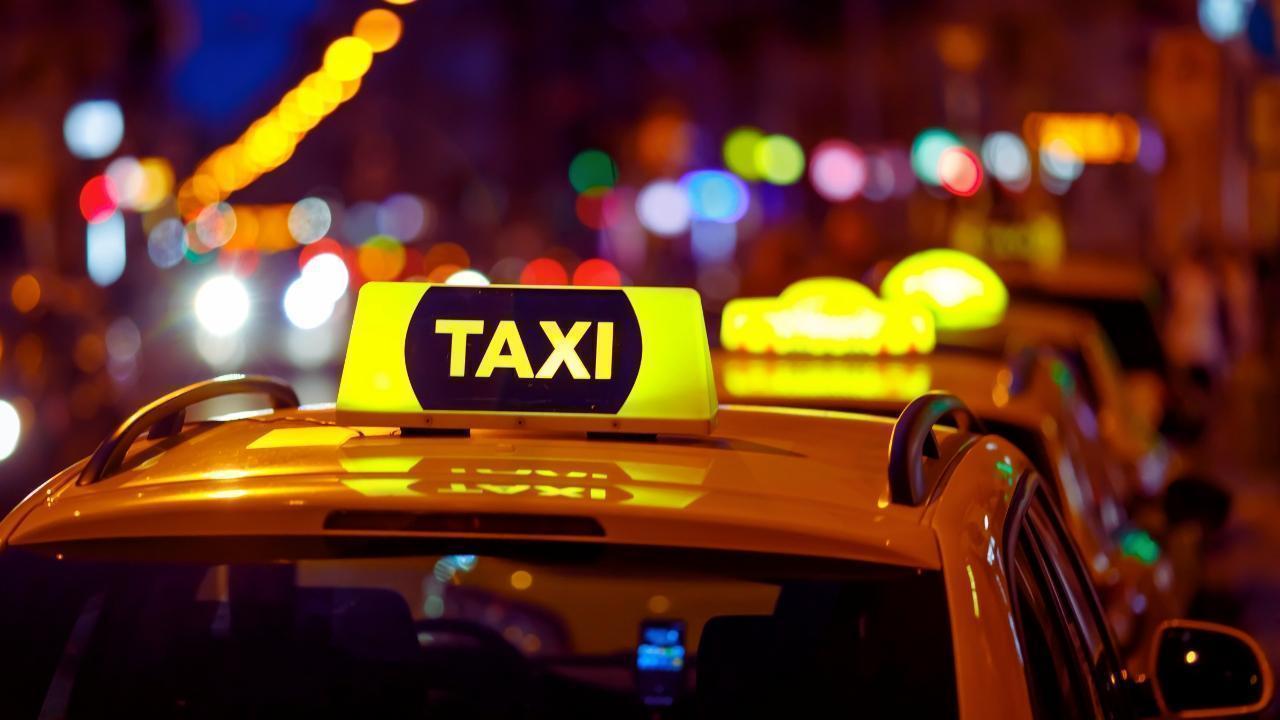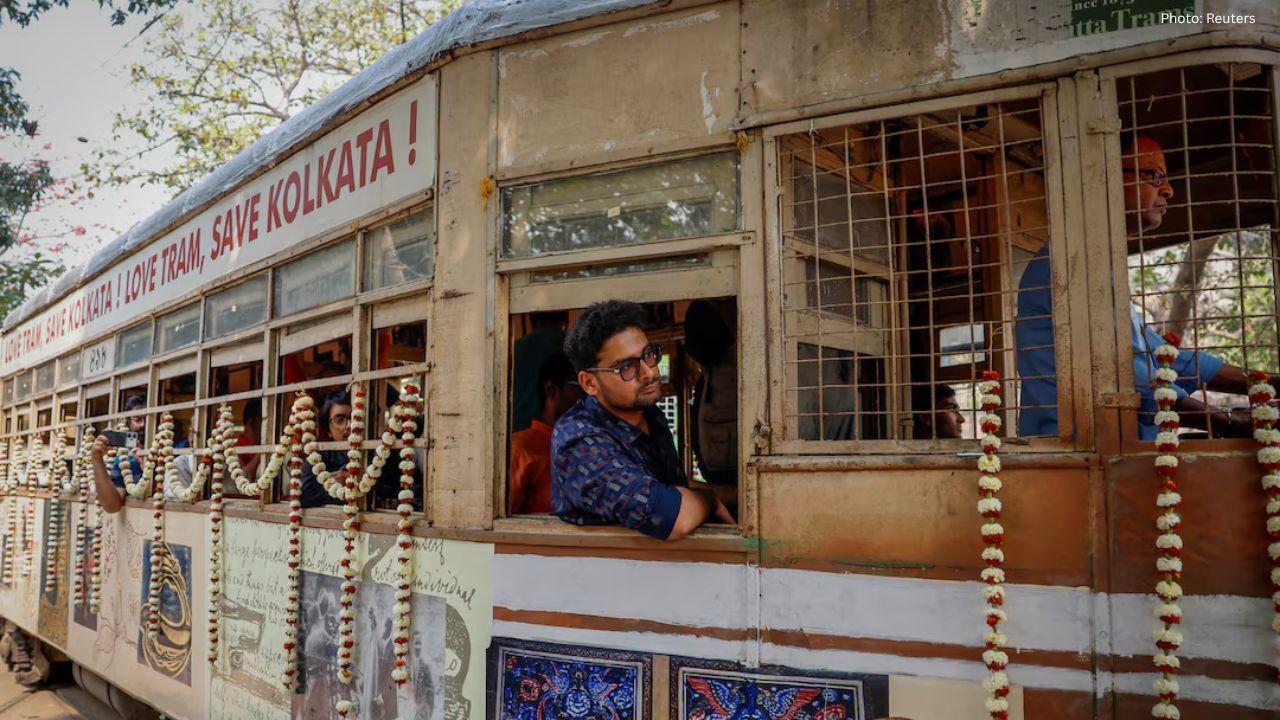You have not yet added any article to your bookmarks!

Join 10k+ people to get notified about new posts, news and tips.
Do not worry we don't spam!

Post by : Anis Farhan
In what was once the realm of science fiction, air taxis are poised to become a tangible part of city life by 2025. The concept of vertical take-off and landing (VTOL) aircraft ferrying passengers across traffic-clogged urban landscapes is nearing reality, with companies like Joby Aviation, Archer Aviation, and Volocopter preparing for commercial launch. Supported by regulatory progress and growing investor confidence, the global air mobility sector is entering its final phase of pre-launch testing—bringing a quieter, cleaner alternative to congested roads.
The idea is simple but revolutionary: instead of spending an hour on a busy freeway, a passenger could board a four-to-six-seater electric air taxi and reach their destination in minutes. These aircrafts are designed to hover, take off, and land vertically—eliminating the need for traditional airport infrastructure. Now, governments, aviation regulators, and tech giants are racing to ensure the infrastructure, safety protocols, and public trust are ready in time.
Air taxis belong to a class of vehicles called eVTOLs (electric vertical takeoff and landing aircraft). These aircraft operate on battery-powered electric propulsion systems, which make them:
Quieter than helicopters
Zero-emission and environmentally friendly
Able to land and take off from small urban vertiports
Cheaper to operate in the long term
Their use is primarily intended for short to medium urban trips—typically between 20 to 60 kilometers. Ideal for airport-to-city center connections, medical emergencies, and high-end commuter travel, these air taxis are set to change the geometry of urban movement.
Several companies are vying to dominate the nascent urban air mobility (UAM) sector:
Joby Aviation (USA): Backed by Uber, Toyota, and Delta Airlines, Joby is seen as a front-runner. Their aircraft has a range of 150+ kilometers and can reach speeds up to 320 km/h. It has already completed over 1,000 test flights.
Archer Aviation (USA): In partnership with United Airlines, Archer’s “Midnight” eVTOL is targeting commercial deployment in 2025, initially in cities like Los Angeles and New York.
Volocopter (Germany): Volocopter has already flown demo flights in Singapore, Paris, and Dubai. Their aircraft is designed for urban tourism and airport shuttles.
EHang (China): This autonomous passenger drone-maker has conducted thousands of successful demo flights and is working with several Asian cities on pilot programs.
Vertical Aerospace (UK) and Lilium (Germany) are also notable contenders.
With Uber’s previous Elevate program absorbed into Joby Aviation, the focus is now on integrated ride-sharing networks that include both ground and air options. Imagine booking an air taxi the same way you request an Uber—seamlessly.
Several cities have emerged as early adopters due to regulatory readiness, infrastructure plans, and favorable airspace conditions:
Dubai: Known for embracing futuristic transport, Dubai has already designated vertiport zones and collaborated with Volocopter for demo flights.
Singapore: Urban planning and airspace management are aligned to make Singapore a likely candidate for early commercial air taxi services.
Los Angeles & New York: Archer and Joby have both set targets for commercial operations in the U.S. by 2025, with backing from United Airlines and NASA’s UAM framework.
Paris: Planning air taxis in time for the 2024 Olympics, with Volocopter testing urban flight corridors.
Tokyo: Japan is developing UAM infrastructure under its “SkyDrive” initiative and has committed to commercial operations within the decade.
Public acceptance hinges on one key factor: safety. While the idea of boarding a drone-like aircraft may feel futuristic—or even risky—manufacturers and regulators are taking extensive steps to address every safety concern:
Redundant Systems: Most eVTOLs are designed with multiple motors and redundant flight systems.
Pilot vs. Autonomous: Initial flights will be piloted, with future autonomous upgrades once public trust and safety are proven.
Low Altitude Operations: These air taxis are expected to fly between 300–600 meters above ground, far below commercial airliner routes.
Certification Pathways: The U.S. FAA, European EASA, and Singapore’s CAAS are fast-tracking UAM-specific aircraft certifications.
Just as electric cars took time to gain public trust, air taxis will likely follow a similar arc—starting with premium services before scaling into more common usage.
One of the strongest selling points of air taxis is their environmental impact—or rather, the lack of it:
No Carbon Emissions: Unlike helicopters or jets, eVTOLs produce zero emissions during flight.
Noise Pollution Reduction: Their quiet rotors produce noise levels similar to a dishwasher, drastically reducing urban noise.
Reduced Traffic Congestion: By shifting a portion of commuters into the air, cities may experience less road congestion.
However, concerns remain about urban airspace crowding, inequitable access, and the energy load on power grids once air taxis scale up. Equity advocates stress that access to this form of transport shouldn’t be limited to the wealthy, and urban planners are debating how to ensure inclusion from the start.
To accommodate eVTOLs, cities will need new infrastructure:
Vertiports: Small heliport-like terminals for takeoff, landing, and passenger boarding. Companies like Skyports and Ferrovial are designing modular vertiports for rooftops and underused land.
Charging Stations: Fast-charging battery infrastructure needs to be integrated into the grid.
Air Traffic Control (ATC): Advanced ATC systems, likely AI-assisted, are being developed to prevent mid-air collisions and manage low-altitude traffic.
Coordination between local governments, aviation authorities, and tech firms will be essential. Cities like Seoul and Miami have already laid out UAM blueprints, while others are still navigating airspace zoning.
Despite the momentum, air taxis face multiple challenges before widespread adoption:
Battery Technology: Current batteries limit range and payload. While fine for 20–30 minute flights, improvements are needed for longer distances.
Affordability: Initial ticket prices are expected to be high, comparable to helicopter rides. Economies of scale will bring costs down, but not immediately.
Weather Vulnerability: Unlike underground metros, air taxis are more affected by weather conditions, especially high winds and storms.
Public Hesitation: Safety perceptions, noise concerns, and privacy issues will need long-term public relations management.
As of 2025, the once-fantastical dream of air taxis is inching closer to reality. With global collaboration, rapid technological innovation, and increasing demand for cleaner and faster urban transit, flying taxis may soon become a part of everyday life—especially in high-density cities.
The revolution is not without its challenges, but if manufacturers can deliver on their promises and regulators keep pace, a new chapter in urban mobility is ready for takeoff.
This article is intended for informational and editorial purposes only. The developments and projections regarding air taxis and urban air mobility are based on publicly available information, industry reports, and expert statements as of the time of publication. Readers should consult official aviation authorities and certified manufacturers for the latest updates, regulatory guidelines, and safety protocols related to air taxi services.










Two Telangana Women Die in California Road Accident, Families Seek Help
Two Telangana women pursuing Master's in the US died in a tragic California crash. Families urge gov

Ranveer Singh’s Dhurandhar Roars Past ₹1100 Cr Worldwide
Ranveer Singh’s Dhurandhar stays unstoppable in week four, crossing ₹1100 crore globally and overtak

Asian Stocks Surge as Dollar Dips, Silver Hits $80 Amid Rate Cut Hopes
Asian markets rally to six-week highs while silver breaks $80, driven by Federal Reserve rate cut ex

Balendra Shah Joins Rastriya Swatantra Party Ahead of Nepal Polls
Kathmandu Mayor Balendra Shah allies with Rastriya Swatantra Party, led by Rabi Lamichhane, to chall

Australia launches review of law enforcement after Bondi shooting
Australia begins an independent review of law enforcement actions and laws after the Bondi mass shoo

Akshaye Khanna exits Drishyam 3; Jaideep Ahlawat steps in fast
Producer confirms Jaideep Ahlawat replaces Akshaye Khanna in Drishyam 3 after actor’s sudden exit ov